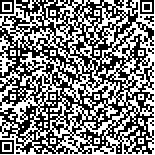刘芳,曲晟,薛凯文,等.不同体位改变模式对青年人和中年人血流动力学的影响[J].中华物理医学与康复杂志,2021,43(5):438-442
扫码阅读全文

|
| 不同体位改变模式对青年人和中年人血流动力学的影响 |
|
| |
| DOI:10.3760/cma.j.issn.0254-1424.2021.05.014 |
| 中文关键词: 体位 中年人 青年人 血流动力学 |
| 英文关键词: Body position Middle-age Youth Hemodynamics |
| 基金项目:深圳市卫生计生委科研项目之学科建设能力提升项目(项目编号:SZXJ2018064);深圳市三名工程“南京医科大学励建安团队”资助项目(SZSM201512011) |
|
| 摘要点击次数: 5501 |
| 全文下载次数: 9348 |
| 中文摘要: |
| 目的 观察70°倾斜站立和0°~70°重复体位改变对青年和中年健康受试者血流动力学的影响。 方法 选取健康中年受试者24例设为中年组,健康青年受试者23例,设为青年组。2组受试者均完成静态70°倾斜站立位和0°~70°重复体位改变两种体位改变,每种体位测试时间为10 min,测试前、中和后均平卧休息10 min。使用无创运动心排和血压计记录2组受试者休息位、静态70°倾斜站立位和0°~70°重复体位改变时的血流动力学参数,并进行统计学分析。 结果 静态70°倾斜站立位时,2组受试者的HR较组内休息位均显著增高,且青年组静态70°倾斜站立位时的心率(HR)为(84.0±9.5)bpm,显著高于组内0°~70°重复体位改变和中年组同体位,而中年组静态70°倾斜站立位时的HR则显著高于组内0°~70°重复体位,差异均有统计学意义(P<0.05)。中年组静态70°倾斜站立位和0°~70°重复体位改变时的SV则显著低于组内休息位,差异均有统计学意义(P<0.05)。2组受试者在静态70°倾斜站立、0°~70°重复体位改变的DBP与组内休息位比较,差异均有统计学意义(P<0.05),且中年组3种体位下的DBP均显著高于青年组同体位,差异均有统计学意义(P<0.05)。青年组受试者在休息位、静态70°倾斜站立位、0°~70°重复体位改变时,男性受试者的每搏量(SV),心排出量(CO)和收缩压(SBP)均显著高于女性同体位,差异均有统计学意义(P<0.05)。 结论 体位改变时,青年人主要表现为心率增加,中年人则表现为SV降低。0°~70°重复体位改变相对于70°倾斜站立对血流动力学的影响更小,相比之下是一种更安全稳定的训练方法,但长期干预效果还需进一步研究证实。 |
| 英文摘要: |
| Objective To observe the effects of static 70° head-up tilted standing and of repeated body repositioning on hemodynamics in healthy young and middle-aged persons. Methods The hemodynamics of 24 middle-aged and 23 younger persons were studied. Both groups were requested to perform static 70° head-up tilted standing and to repeatedly change their body position from 0° to 70° of tilt at a velocity of 1°/second for ten minutes in a random order. Before, between and after each test the subjects rested supine for ten minutes. Hemodynamic variables and blood pressure were recorded non-invasively. Results The average heart rate (HR) increased significantly in both groups when rising from supine to the testing positions. In 70° tilted standing the average HR of the youth group, 84.0±9.5bpm, was significantly higher than that in the other position and that of the middle-aged group in the same position. The average HR of the middle-aged group in 70° tilted standing was also significantly higher than in the other position. Among the middle-aged group, the average stroke volume (SV) in the testing positions was significantly lower than when resting. Significant differences were observed in the average diastolic blood pressure (DBP) between the testing and rest positions for both groups, with the average DBP of the middle-aged group significantly higher than that of the youth group in all three positions. Among the youth group, the average SV, CO and systolic blood pressure (SBP) of the males were significantly higher than among the females in all of the different body positions. Conclusions Young persons mainly rely on an increased heart rate to maintain cardiac output while middle-aged participants appear to achieve this through increased peripheral resistance. Repeated position changes have less impact on hemodynamics than 70° inclined standing, making it a safer and more stable training method. However, the long-term effects of such intervention need to be confirmed in further studies. |
|
查看全文
查看/发表评论 下载PDF阅读器 |
| 关闭 |